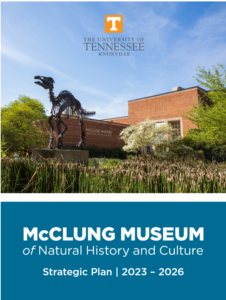Overview
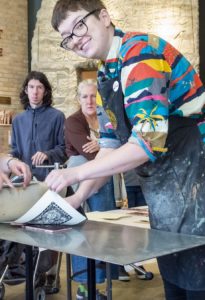 We began the strategic planning process in the Summer of 2021. Working with consultant Dina Bailey from Mountain Top Vision based out of Atlanta, GA, Phase I consisted of eight focus groups with community partners followed by five one-on-one interviews with major partner leaders. The eight focus groups were the McClung Museum’s Board of Advisors, community and education leaders and partners of Knoxville, arts and culture leaders and partners of the area, past and present McClung and UT Knoxville students, university department and unit leaders, research-based partners, diversity-based partners, and visitors. The five interviews were done with the Provost, the Dean of Libraries, a major donor, a senior arts leader in
We began the strategic planning process in the Summer of 2021. Working with consultant Dina Bailey from Mountain Top Vision based out of Atlanta, GA, Phase I consisted of eight focus groups with community partners followed by five one-on-one interviews with major partner leaders. The eight focus groups were the McClung Museum’s Board of Advisors, community and education leaders and partners of Knoxville, arts and culture leaders and partners of the area, past and present McClung and UT Knoxville students, university department and unit leaders, research-based partners, diversity-based partners, and visitors. The five interviews were done with the Provost, the Dean of Libraries, a major donor, a senior arts leader in 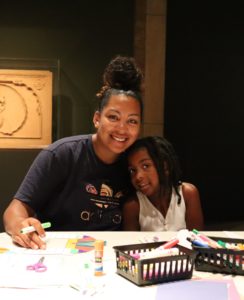 Knoxville, and a senior Tennessee Valley Authority (TVA) leader. All focus groups and interviews were facilitated by Bailey with no museum staff present. Following interviews and focus groups, findings were summarized by Bailey and presented to the McClung staff. The second phase of strategic planning took place over the 2022 spring semester and into the summer. This included breakout focus groups with museum staff, all-staff retreats, and executive committee meetings as facilitated by Bailey. Each gathering worked towards crafting and redefining the museum’s mission, vision, purpose, values, and the primary communities to focus our service moving forward. Through this process, the museum hopes to grow, shift, and change for the better by continuing to share stories and facilitating the exchange of ideas to awaken curiosity in service of the university and communities connected to Tennessee. This is a three year plan which will begin in January 2023 and is expected to end at the conclusion of Fiscal Year 2026.
Knoxville, and a senior Tennessee Valley Authority (TVA) leader. All focus groups and interviews were facilitated by Bailey with no museum staff present. Following interviews and focus groups, findings were summarized by Bailey and presented to the McClung staff. The second phase of strategic planning took place over the 2022 spring semester and into the summer. This included breakout focus groups with museum staff, all-staff retreats, and executive committee meetings as facilitated by Bailey. Each gathering worked towards crafting and redefining the museum’s mission, vision, purpose, values, and the primary communities to focus our service moving forward. Through this process, the museum hopes to grow, shift, and change for the better by continuing to share stories and facilitating the exchange of ideas to awaken curiosity in service of the university and communities connected to Tennessee. This is a three year plan which will begin in January 2023 and is expected to end at the conclusion of Fiscal Year 2026.
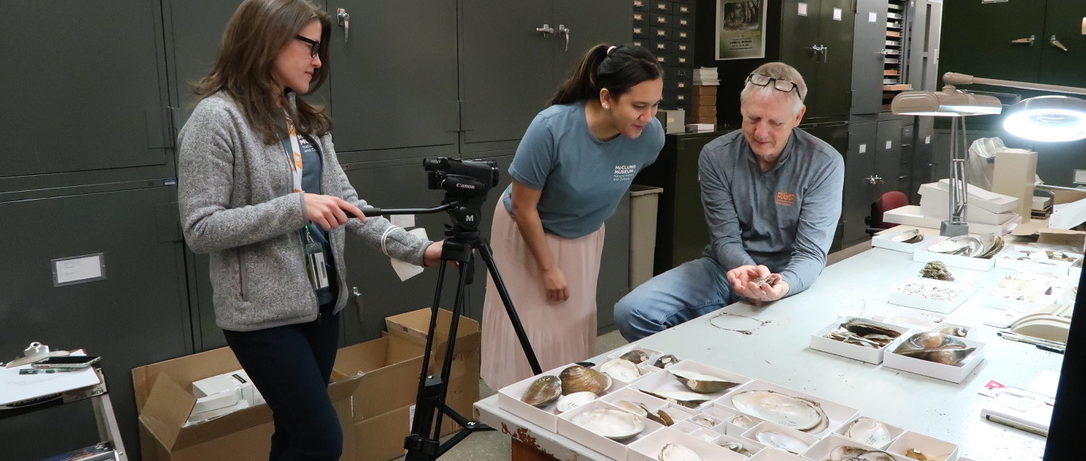
 The team at the McClung Museum worked carefully and thoughtfully towards crafting this plan, and we are excited to begin and see this work through. Although ambitious, I know that we are up for the challenge as we strive to facilitate the partnerships and connections that make us who we are as a museum. As a museum that serves both the university and many other communities around us, we face unique challenges. I am confident that this strategic plan will allow us to stay on course and serve our communities in meaningful and creative ways. I am thankful to all our partners on campus, in East Tennessee, and beyond, who continue to challenge and support the museum so we can have new opportunities to learn, adapt, and grow, and who will keep us accountable during the implementation of this plan. I am grateful to Dina Bailey for her patience, care, and wisdom while guiding us in this process; to Humanities Tennessee, for the SHARP grant we received to fund the preparation of this plan;
The team at the McClung Museum worked carefully and thoughtfully towards crafting this plan, and we are excited to begin and see this work through. Although ambitious, I know that we are up for the challenge as we strive to facilitate the partnerships and connections that make us who we are as a museum. As a museum that serves both the university and many other communities around us, we face unique challenges. I am confident that this strategic plan will allow us to stay on course and serve our communities in meaningful and creative ways. I am thankful to all our partners on campus, in East Tennessee, and beyond, who continue to challenge and support the museum so we can have new opportunities to learn, adapt, and grow, and who will keep us accountable during the implementation of this plan. I am grateful to Dina Bailey for her patience, care, and wisdom while guiding us in this process; to Humanities Tennessee, for the SHARP grant we received to fund the preparation of this plan;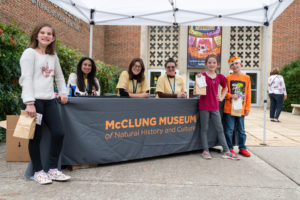 to Dr. John Zomchick, Provost and Senior Vice Chancellor, for his continuous support to the museum; and to our members, donors, and sponsors, for their generosity in helping us to be adventurous and engaging. Finally, I am grateful to all the museum employees, graduate research assistants, student workers, and volunteers, for their ongoing work and commitment to the McClung Museum.
to Dr. John Zomchick, Provost and Senior Vice Chancellor, for his continuous support to the museum; and to our members, donors, and sponsors, for their generosity in helping us to be adventurous and engaging. Finally, I am grateful to all the museum employees, graduate research assistants, student workers, and volunteers, for their ongoing work and commitment to the McClung Museum.
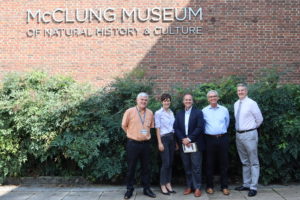 The McClung Museum plays a critical role in the University of Tennessee’s land-grant mission by bringing knowledge of the natural and cultural past to diverse communities. Not only do the museum’s collections provide research opportunities for university students, but they also serve as educational resources for the thousands of K-12 students and other visitors who pass through its galleries. The McClung Museum is a unique and prized part of our campus.
The McClung Museum plays a critical role in the University of Tennessee’s land-grant mission by bringing knowledge of the natural and cultural past to diverse communities. Not only do the museum’s collections provide research opportunities for university students, but they also serve as educational resources for the thousands of K-12 students and other visitors who pass through its galleries. The McClung Museum is a unique and prized part of our campus.
This Strategic Plan described in the following pages is the result of a planning process spanning several months, representing hard work and dedication by staff, students, faculty, partners, and community members. I want to extend my heartfelt thanks to everyone who participated in this process. The plan’s goals and objectives outline a series of initiatives through which the museum will leverage the power of 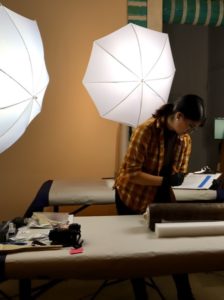 place to deepen visitors’ engagement with natural and cultural history. It provides a roadmap for the museum to increase community engagement and educational opportunities in an ever-changing social, cultural, and educational landscape. When executed, the plan will strengthen relationships with key audiences and advance archaeological and biological research. Because of the museum’s archaeological collections from Southeastern Native American cultures, it is essential that we work to strengthen our commitment to honoring the Native Nations that historically inhabited this land. This plan does that.
place to deepen visitors’ engagement with natural and cultural history. It provides a roadmap for the museum to increase community engagement and educational opportunities in an ever-changing social, cultural, and educational landscape. When executed, the plan will strengthen relationships with key audiences and advance archaeological and biological research. Because of the museum’s archaeological collections from Southeastern Native American cultures, it is essential that we work to strengthen our commitment to honoring the Native Nations that historically inhabited this land. This plan does that.
I am pleased to present this plan to the reader. I hope that all share in my excitement for the future of McClung Museum of Natural History and Culture.
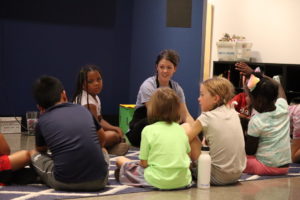 The first three words that come to mind when I think about the McClung are: commitment, growth, and transformation. Over the year and a half that I have worked with the McClung team, I have seen their commitment to listening, adapting, and trying new ways of thinking and working. I have been a witness to the ways in which they have grown more strategic and more nuanced in their discussions; and, how they have moved from concepts to statements to actions as they have begun to authentically transform what it means to be the McClung.
The first three words that come to mind when I think about the McClung are: commitment, growth, and transformation. Over the year and a half that I have worked with the McClung team, I have seen their commitment to listening, adapting, and trying new ways of thinking and working. I have been a witness to the ways in which they have grown more strategic and more nuanced in their discussions; and, how they have moved from concepts to statements to actions as they have begun to authentically transform what it means to be the McClung.
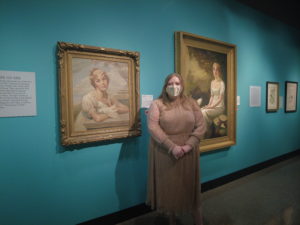 As with any transition of leadership, interpersonal dynamics, and ways of working, there have been bumps along the way – and there will naturally continue to be as long as the McClung staff continue to stretch themselves to uphold the promises they’ve made within their vision, mission, purpose, and values. I have been honored to get to know the staff, some of the communities in which they work, and the university through this process. And, I am proud of the efforts every staff member has made to be courageous in surfacing ideas, feelings, and concepts along the way. As the impact of this strategic plan ripples out in the connections, partnerships, and actions of the future, I am confident in the McClung’s staff and their ability to follow through as an adaptive, transparent, responsible, and collaborative organization. I hope that all who come in contact with this strategic plan see the intentionality, hard work, and clarity embodied here.
As with any transition of leadership, interpersonal dynamics, and ways of working, there have been bumps along the way – and there will naturally continue to be as long as the McClung staff continue to stretch themselves to uphold the promises they’ve made within their vision, mission, purpose, and values. I have been honored to get to know the staff, some of the communities in which they work, and the university through this process. And, I am proud of the efforts every staff member has made to be courageous in surfacing ideas, feelings, and concepts along the way. As the impact of this strategic plan ripples out in the connections, partnerships, and actions of the future, I am confident in the McClung’s staff and their ability to follow through as an adaptive, transparent, responsible, and collaborative organization. I hope that all who come in contact with this strategic plan see the intentionality, hard work, and clarity embodied here.
2023 – 2026 Strategic Plan
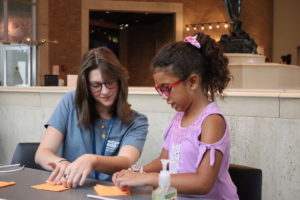 We believe in being welcoming to all, authentically inclusive, and amplifying a sense of belonging whenever we can. The Primary Communities, listed below, are not meant to be exhaustive and they are only listed in alphabetical order. As we implement this plan, we will continue to seek opportunities to develop specific connections and relationships with new communities in Tennessee.
We believe in being welcoming to all, authentically inclusive, and amplifying a sense of belonging whenever we can. The Primary Communities, listed below, are not meant to be exhaustive and they are only listed in alphabetical order. As we implement this plan, we will continue to seek opportunities to develop specific connections and relationships with new communities in Tennessee.
Intergenerational Learning Communities – Intergenerational learning is a form of informal learning, which is related to questions of cultural and local identity and social cohesion. Communities of particular interest are public schools; educators; Spanish-speaking families; Black, Indigenous, and people of color; and senior adults.
Native Nation Communities – Native Nation communities include a range of potential partners. This plan emphasizes Leaders of Native Offices, Native Museums, Native Educators and schools, and Native artists/artisans/craftspeople.
UT Knoxville Students – As part of the university, students are a core stakeholder group, and we strive to connect to the full range of experiences and diversity in our student body including Graduate Assistants; the FUTURE Postsecondary Program; the museum’s student workers and interns; students from historically underrepresented populations and backgrounds (such as students who are Black, Indigenous, and people of color, and LGBTQ+ students); the McClung Student Advisory Board; Student Life; and the students we teach.
We will work to build and maintain ethical partnerships and connections with people who support the achievement of our mission.
Objective 1: Build Relationships with Our Primary Communities and Our Donors/ Supporters
Action A: Build relationships to promote intergenerational learning.
-
Tactic 1: Determine two intergenerational learning groups to focus on each fiscal year.
-
Tactic 2: Determine two community partners connected to those intergenerational learning groups to focus on each fiscal year.
-
Tactic 3: Annual evaluation of partnerships to determine their success and formalize their continuation.
Action B: Build new and strengthen old relationships with Native Nations.
-
Tactic 1: Determine two Native Nations to focus on each fiscal year.
-
Tactic 2: Determine two community partners connected to those Native Nations to focus on each fiscal year.
-
Tactic 3: Annual evaluation of partnerships to determine their success and formalize their continuation.
Action C: Build Relationships with UT Knoxville Students.
-
Tactic 1: Determine two UT Knoxville student populations to focus on each fiscal year.
-
Tactic 2: Determine two community partners connected to those student populations to focus on each fiscal year.
-
Tactic 3: Annual evaluation of partnerships to determine their success and formalize their continuation.
Action D: Build Relationships with our community donors and supporters based on Primary Communities.
-
Tactic 1: Determine and prioritize donors and supporters to focus on for each year of the plan.
Objective 2: Audit the Current Organizational Documents
Action A: Create, review, and update organizational documents.
-
Tactic 1: Determine documents to prioritize.
-
Tactic 2: Update bylaws for Board of Advisors.
-
Tactic 3: Review bylaws for Student Advisory Board.
Action B: Assess overall internal structure including organizational hierarchy, cross-department collaboration, external collaboration within and outside of UT, structures and processes in alignment with the mission, vision, purpose, values, and primary communities.
-
Tactic 1: Review organizational changes needed to Board of Advisors, McClung Student Advisory Board, and other community partners.
-
Tactic 2: Update Governance, Staff, and Volunteer role and responsibility position descriptions in alignment with the mission, vision, purpose, values, and primary audiences.
-
Tactic 3: Complete annual evaluations of Governance, Staff, and Volunteers in alignment with strategic goals.
We will promote a cohesive organizational culture, purpose, and message.
Objective 1: Examine Our Foundations
Action A: Define the role of our collection in future exhibits, programs, and research.
-
Tactic 1: Audit our collections. Determine how our current and future collections are relevant to our mission.
-
Tactic 2: Audit our previous exhibitions. Determine how our current and future exhibitions are relevant to our mission.
-
Tactic 3: Create a 5-year master plan for exhibition spaces and develop a 3-year rotating exhibitions schedule.
-
Tactic 4: Create an updated Code of Ethics.
Action B: Foster an innovative mindset that keeps us looking for productive adaptations and opportunities.
-
Tactic 1: Each department develops a process for reflection, review, and adaptation of (at least) an annual evaluation of ideas, museum trends, and academic and cultural shifts.
-
Tactic 2: Each department tracks the progress and impact of annual evaluations through an assessment of progress.
-
Tactic 3: New findings are provided through a brown bag series, during the annual retreat, and in the annual report.
Action C: Further and deepen cross-departmental collaborations.
-
Tactic 1: At an annual staff retreat, determine an institutional initiative to be conceptualized and implemented throughout the next fiscal year.
-
Tactic 2: At the end of each fiscal year, develop individual performance goals that include cross departmental collaboration to be implemented the next fiscal year.
-
Tactic 3: At the end of each fiscal year, complete individual performance appraisals that include cross-departmental collaboration.
Objective 2: Spread Our Message
Action A: Determine initial brand identity and brand guidelines.
-
Tactic 1: Determine brand guidelines based on mission, vision, values, purpose, and strategic plan.
-
Tactic 2: Develop style guidelines.
-
Tactic 3: Audit and update all messaging, including digital and printed materials in accordance with guidelines.
Action B: Develop messaging framework for each of our primary communities.
-
Tactic 1: Determine initial messaging of brand identity (mission, vision, values, purpose, strategic plan, etc.) for each primary community.
-
Tactic 2: Work with representatives from each primary community to gain constructive feedback about messaging.
-
Tactic 3: Customize initial messaging for each primary community and develop a 2-year communications framework.
-
Tactic 4: Review the communications framework annually and adapt as needed.
We will evaluate and prioritize our resources to enhance our impacts.
Objective 1: Audit Museum Physical and Digital Space
Action A: Develop benchmarks for museum physical and digital space in alignment with mission, vision, purpose, and values.
Action B: Assess physical museum space.
-
Tactic 1: Identify and prioritize the long-term care and maintenance needs of the facility over FY23-FY26.
-
Tactic 2: Assess permanent and temporary exhibition spaces.
-
Tactic 3: Assess research and collections spaces.
-
Tactic 4: Assess programmatic and teaching spaces.
-
Tactic 5: Create template for future use and implement an operational plan for FY23.
-
Tactic 6: Develop and implement an operational plan for each fiscal year.
Action C: Audit digital museum space.
-
Tactic 1: Consult with the university’s Office of Communications and Marketing and Office of Information Technology.
-
Tactic 2: Assess website.
-
Tactic 3: Assess social media.
-
Tactic 4: Assess digital presentation of collections.
-
Tactic 5: Turn assessments into report/benchmark plan/ priorities for future work.
Objective 2: Conceptualize and Implement Plans for our Spaces
Action A: Conceptualize operational plans for physical museum spaces to build a case for advocacy.
-
Tactic 1: Evaluate programmatic schedules and their capacity limits.
-
Tactic 2: Evaluate report from physical assessment and conceptualize plan for space(s).
-
Tactic 3: Advocate with the university for resources to implement the plan with the assessment and other data as evidence.
Action B: Conceptualize operational plans for digital museum spaces based on audit.
-
Tactic 1: Evaluate report from digital assessment and conceptualize plan for space(s).
-
Tactic 2: Advocate with the university for resources to implement the plan with the assessment and other data as evidence.
Objective 3: Develop Business Case for Museum Space
Action A: Work with a consultant to develop a business case for the expansion of museum space.
Action B: Begin an internal assessment of the physical building with the appropriate campus partners including the College of Architecture + Design.
Action C: Work with a consultant and community partners to develop a capital campaign plan for the expansion of museum space.
Objective 4: Develop and Update Education and Interpretive Plans
Action A: Develop and update educational goals, philosophy, messages, and general activities based on research and best practices.
-
Tactic 1: Define parameters for quality, accuracy, appropriateness, and effectiveness.
-
Tactic 2: Evaluate exhibition content for accuracy, appropriateness for primary communities, high quality, and effectiveness and impact.
-
Tactic 3: Evaluate programmatic content for accuracy, appropriateness for primary communities, high quality, and effectiveness and impact.
-
Tactic 4: Determine annual priorities and conduct primary research in accordance with organizational mission, goals, and scholarly standards.
Action B: Ensure that the interpretive goals and messages of future exhibitions align with museum mission and are based on current research and best practices.
-
Tactic 1: Update exhibition proposal form so that interpretive goals and messages are aligned with museum mission and vision.
-
Tactic 2: Update exhibition review procedures to reflect the collaborative and adaptive values of the museum.
Objective 5: Consistently Monitor Organizational and Financial
Sustainability and Growth
Action A: Assess organizational needs for institutional sustainability and growth potential.
-
Tactic 1: Annually develop organizational budgets that promote long-term sustainability and realistic growth in alignment with the mission, vision, purpose, and values.
-
Tactic 2: Annually develop specific Development goals for large institution-wide initiatives.
Objective 6: Audit Resources and Staff Expertise in Alignment with the Museum’s Mission
Action A: Assess capacity of current staff.
-
Tactic 1: Review job descriptions to support capacity needs.
-
Tactic 2: Develop plan for future staff capacity needs.
-
Tactic 3: Determine current staff expertise in connection with current museum operations.
-
Tactic 4: Develop plan to complement existing expertise.
-
Tactic 5: Integrate both individual and collective professional development into annual staff goals for all staff through workshops, retreats, courses, and conferences.
We actively, responsibly, and ethically care for the objects entrusted to the
museum.
Objective 1: Update Museum Collections Management Policies and Procedures
Action A: Assess safety and security procedures and plans for collections in the museum’s custody.
-
Tactic 1: Update an emergency preparedness plan.
-
Tactic 2: Update policies and procedures for current and future loans of the museum’s collections.
-
Tactic 3: Update policies and procedures for use of federal collections by museum and others.
-
Tactic 4: Update processes that regularly monitor environmental conditions and mitigate harm.
-
Tactic 5: Solidify the agreement with the Tennessee Valley Authority and other Federal partners for continued care and use of collections.
-
Tactic 6: Promote and highlight access to our collections for research purposes, both at UT and beyond.
Action B: Identify needs and determine priorities for ethical care and storage.
-
Tactic 1: Complete an annual assessment of collection needs (accessions, deaccessions, conservation priorities, and risk management in alignment with mission, vision, purpose, and values).
-
Tactic 2: Update collections care policies and procedures for collections on exhibition in accordance with sustainable gallery rotations plans.
-
Tactic 3: Update collections care policies and procedures for collections in storage.
-
Tactic 4: Update collections care policies and procedures for collections on loan.
Objective 2: Prioritize Repatriation Compliance and Consultation
Action A: Use the Native American Graves Protection and Repatriation Act (NAGPRA) and ethical principles in the museum field as our guides and starting point.
Action B: Ensure that policies and procedures center the needs and preferences of Native Nations regarding the proper care and current and potential future use of collections.
Objective 3: Provide Physical and Intellectual Access to the Collections
Action A: Update policies and procedures for staff access to physical and digital collections, data, and information.
Action B: Update policies and procedures for physical and digital researcher access.
Action C: Update policies and procedures for physical and digital community access.
